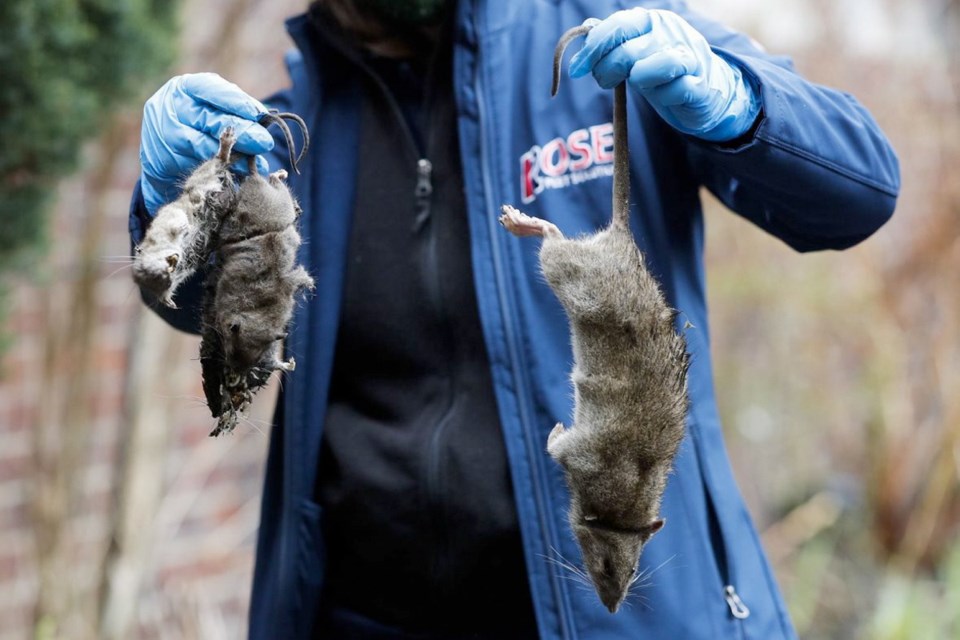File under the heading “What new hell is this?” Apparently, Victoria’s rat and mice populations are engaged in internecine warfare.
The problem, it seems, is that these critters normally survive by raking through garbage from restaurants, stores and stuff discarded by untidy tourists.
With many restaurants shuttered and the number of visitors to the city in steep decline, our rodent colonies are starving. That has resulted, literally, in a food fight — to the death, in some cases.
Not a bad thing, you might say. Other attempts to thin out their numbers have failed miserably.
According to a technical supervisor with Victoria Pest Control, some of the city’s older buildings have “astronomical numbers” of mice.
I recall an experience of our own. Some years ago, when we lived in Cordova Bay, we had chickens.
But when you have chickens, you have rats. We hired a pest control guy who laid traps throughout the yard. But after weeks of effort, he never caught a single one.
Warfarin works, but you can’t be chucking the stuff around indiscriminately, indeed at all, if you have pets or young kids.
If I might be permitted a non-serious digression, when I lived in Saskatchewan, it was a matter of frustration that rats and mice were common. Yet, Alberta boasted long and loud that it had no rats.
I’m not sure why that was so, or even if it was true. But while working for the provincial government, I framed an answer.
I called it the MARTA program, short for “mail a rat to Alberta.” Regrettably, there were no takers.
In any event, while civil war in rodent country might be no bad thing, there could be a downside.
Two, actually. First we could see a survival of the fittest.
Now rats are cunning little buggers. Kill one in a trap, and the other members of the tribe take note and stay away.
That’s why warfarin works. The effects are not immediate, meaning suspicions aren’t raised.
But if we end up with a population of super rats, who can say where that goes. Instead of rattus norvegicus, we could end up with rattus horribilis.
The second potential downside is that as food supplies dry up across the city centre, the mouse and rat population — what remains of it — might begin an outward spread, looking for a new source of dinner.
As the supervisor with Victoria Pest Control put it: “People should anticipate a shift in rodent behaviour and that shift is more rodent pressure in areas that don’t typically have it.”
And he went on to say he has already seen an increase in the number of mouse calls to Victoria’s James Bay neighbourhood.
The question is what can be done? Certainly, we should all be careful not to leave scraps of anything edible lying around. Make sure the garbage lid is on tight.
Cleanliness in the kitchen and wherever food is stored is also necessary.
In older homes, look for entry points such as roof ventilators that might have come loose, or doors that no longer close snugly.
The problem here is that mice can squeeze through holes no greater than six millimetres across. For those of us who grew up in the pre-decimal era, that’s just under a quarter of an inch.
Rats can wriggle through a 12 millimetre gap — slightly less than half an inch. Those are tiny apertures, the kind you could easily miss as you rodent-proof your home.
There’s an irony of sorts here. The bubonic plague was initially spread by rats, which carried infected fleas and lice. It’s estimated that 25 million people died in Europe between 1347 and 1351.
This time, it’s the other way round. As we fight COVID-19, it’s the rodent population that is paying the price.



